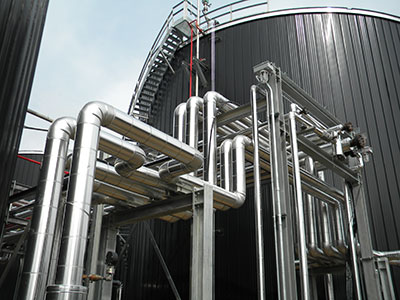Cellular glass insulation is known for its safety, but understanding its SDS is important for compliance. Many overlook the need for proper safety data sheets until issues arise.
The Safety Data Sheet (SDS) for cellular glass insulation details its composition, hazards, handling, and emergency measures. Reviewing the SDS helps ensure workplace safety and regulatory compliance when handling or installing cellular glass.

If you use cellular glass, you may wonder what is inside, how safe it is, and what steps to follow when handling it. I have worked with contractors and facility managers who only realized after an inspection that their files for insulation products were incomplete. Understanding the SDS ahead of time removes worry and saves time.
What Is Cellular Glass Insulation Made Of?
For many, the makeup of insulation products is a mystery until a concern comes up. Not knowing what is inside can make you second guess your choice.
Cellular glass insulation is mainly made of glass powder mixed with a foaming agent, then heated to form a rigid, closed-cell structure. There are no organic binders, resins, or toxic additives.

When I walk through a project with industrial customers in mind, I explain that cellular glass gets its strength and insulating properties from millions of tiny, airtight glass cells. These are created by mixing recycled glass with foaming agents. The mixture is then baked at high heat, where the agents form gas bubbles in the molten glass. As the material cools, it turns into a rigid block. Since the product is all glass, it has no organic materials, does not burn, and will not absorb water or hold on to chemicals. This makes the SDS simple; there are no complex chemical risks usually. However, fine dust may come from cutting or handling, so the SDS explains how to manage dust, what to wear for safety, and what to do in the case of accidental exposure.
What Hazards Does the SDS for Cellular Glass Insulation Identify?
Some think using insulation is always risk-free. But even “safe” materials can have handling risks.
SDS for cellular glass insulation lists physical hazards like dust from cutting, which can mildly irritate skin, eyes, and lungs. No toxic chemicals, carcinogens, or combustion products are present.

From my experience, the biggest risk during installation is dust. The SDS will confirm that, while the product does not burn or emit smoke, cutting or grinding can make glass dust. This dust is not dangerous in the way silica or asbestos is, but it can bother eyes and lungs if you do not work carefully. When our teams cut boards or pipes to fit tanks, we always use dust masks and goggles. I remind my staff that, although the risk is low, good habits now avoid problems later. The SDS also covers emergency measures, such as rinsing eyes with water if dust gets in them, and wearing gloves to avoid skin scratches. Importantly, the sheet assures you there are no toxic additives, so you do not have to worry about hazardous chemicals that often come up with other insulation types.
How Should You Handle and Store Cellular Glass Safely?
Many do not think about safe handling or storage until a product is damaged or someone is hurt. Planning ahead saves trouble and money.
The SDS recommends handling cellular glass gently. Wear gloves and dust masks when cutting. Store the product in a dry area away from strong impacts. It is stable in normal temperatures and weather.
When I send cellular glass boards or pipes to a job site, I stress the need to move them with care. Although the material is strong, it can chip if dropped or hit against hard objects. The SDS says to use gloves when moving pieces and recommends cutting in well-ventilated spaces to control dust. We train teams to use sharp tools for straight cuts, which makes less dust. After installation, cellular glass will not degrade or absorb moisture, but storing it off the ground and covered protects it from accidental impacts and keeps it clean. My customers have learned these small steps keep jobs on track, with no delays from damaged materials.
Does Cellular Glass Insulation Meet Industry Safety Standards?
Doubts about safety and compliance keep many from trying new materials. Reliable certification builds trust and eases concerns about regulations.
Cellular glass insulation meets ASTM, ISO, CE, and SGS standards, per the manufacturer’s documentation and SDS. It is non-combustible, non-toxic, and fire-resistant, making it suitable for demanding applications.
Early on, our projects needed clear proof that insulation used in tanks or piping was both safe and up to code. Cellular glass from our factory is tested to the world’s strictest standards. This means every batch is checked for fire resistance, thermal stability, and chemical safety. The SDS states that the product is free from hazardous substances and matches ASTM, ISO, CE, and SGS certifications. Our overseas customers, including chemical plants in Europe and North America, demand this documentation to meet audit and insurance requirements. When these standards are met and clearly outlined in the SDS, clients feel confident using cellular glass for critical projects, from cryogenic tanks to power plants.
Conclusion
Knowing the SDS for cellular glass insulation makes selecting, handling, and using the product simple and safe, while ensuring full regulatory compliance and long-term system reliability.

